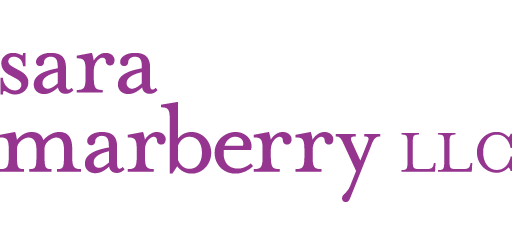 When it comes to healthcare, it was a year of the patient experience, as providers struggled to improve HCAHPS scores. Ebola put a new focus on healthcare worker safety, while efforts continued to improve patient safety. Uncertainty about the Affordable Care Act (ACA) waned — a bit.
When it comes to healthcare, it was a year of the patient experience, as providers struggled to improve HCAHPS scores. Ebola put a new focus on healthcare worker safety, while efforts continued to improve patient safety. Uncertainty about the Affordable Care Act (ACA) waned — a bit.
The design of the built environment of healthcare played an important role in all of these things. When I looked at my 10 most read healthcare design posts in 2014, I was a bit surprised that six of them were about evidence-based design or research.
But then I thought about it. And decided it’s not really all that surprising that those of you who are involved in making healthcare design decisions want them to be research-informed. That’s the essence of the evidence-based design process.
So, if you missed any of these posts, now’s your chance to get caught up. Here they are, starting with #10:
10. 5 Key Insights to Inform Hospital Waiting Area Design
Today, I find myself in the hospital waiting area while my husband has knee replacement surgery. I will be there 3-4 hours, possibly more. Yesterday, I received a digital copy of Steelcase Health’s “Time for Change: New Solutions for Healthcare Places” — a guide that was informed by 18 studies and 15,000 hours of observation over 10 years. In it was a section on waiting places, with five key insights to inform hospital waiting area design… Read more.
9. 7 Healthcare Design Books That Should Be in Your Library
The recent release of the fourth edition of Jain Malkin’s classic healthcare design book, Medical and Dental Space Planning, has got me thinking about other must have books. Even if you don’t have the time or inclination to read an entire book, it’s good to at least have them on hand for easy reference or inspiration when you need it. Here are 6 more books about healthcare design, in alphabetical order by title…Read more.
8. Connecting With Patients
I shared this video from the Cleveland Clinic last week on my LinkedIn status update, but it’s so good, I’m sharing it again. The reason it’s so good is that it simply and poignantly tells makes the point that every patient, every staff member, and every visitor to a hospital has their own story to tell…Read more.
7. Why Not Some Abstract Art for Healthcare Facilities?
After seeing Henry Domke’s post about abstract art for healthcare earlier this week, I thought I’d jump into the fray. He’s still conducting his straw poll, but most of the healthcare art experts Domke queried said no to abstract art. In a “Guide to Evidence-based Art” published by The Center for Health Design, authors Kathy Hathorn, MA, and Upali Nanda, Ph.D., present an excellent summary of the research on art for healthcare…Read more.
6. A Design Research Website You Should Check Out
Have you heard that InformeDesign, the website with design research sources, content, and tools, has been relaunched? I didn’t know this, but I ran into one of its co-creators, Caren Martin, Ph.D., at Neocon last month — and she gave me all the details. Originally launched in January 2003, InformeDesign was a project that Martin and Denise Guerin, Ph.D., developed as faculty members at the University of Minnesota…Read more.
5. Healthcare Furniture Manufacturers at Neocon Go Beyond Showcasing Product
While there was lots of great ideas and products for healthcare spaces showcased at Neocon in Chicago this week, healthcare furniture manufacturers Herman Miller Healthcare and Steelcase Health stole the show. Having just changed its name from Nurture by Steelcase, Steelcase Health had a lot to talk about…Read more.
4. A Must-Have Evidence-Based Design Resource
When I think about the champions of evidence-based design, two names immediately come to mind: Roger Ulrich and Kirk Hamilton. Both are former board directors of The Center for Health Design (CHD) and both have been professors at Texas A&M University’s College of Architecture (Kirk still is; Roger is now at Chalmers University of Technology in Sweden). As far as I can tell, Roger was the first person to coin the term evidence-based design, in an interview he gave to the Lancet in 1999. But Kirk was instrumental in defining it…Read more.
3. Don’t Always Believe What You Read About Evidence-Based Design
Once again, healthcare design made mainstream news this week as NBC News posted a piece on the healing power of art on its website. For the most part, it was good, quoting a lot of knowledgeable sources and sharing interesting facts, like…Read more.
2. 7 Healthcare Design Lessons From a 259-Year-Old Hospital
I often write about healthcare design trends and new hospital facilities. But the other day as I was looking for something in my files, I came across a 1992 article I’d saved from Modern Healthcare on the first hospital in the U.S. — Pennsylvania Hospital in Philadelphia. It made me think about the fact that we should always look to the past in order to design for the next healthcare…Read more.
1. Emerging vs. Strong Research to Support Evidence-Based Design
Recently, Gary Vance at BSA Lifestructures asked me what I thought of the notion of emerging versus strong evidence in healthcare design research. He’d noticed this definition in a paper published by The Center for Health Design (CHD) last summer…Read more.
Guess which one of these posts got the most comments? The one about abstract art.
P.S. Please do me a favor — if you liked this post and like this blog, please share it with others by sending them the link and/or post it on your Twitter, LinkedIn, or Facebook, etc. Also, don’t forget to subscribe, so you’ll get emails when new content is posted. Thanks!
If you like this post, please share.

What’s my story? I’m a healthcare and senior living design knowledge expert who writes and speaks frequently about trends and issues affecting these two industries. I’m also a strategic marketing consultant and content creator, working with companies and organizations who want to improve the quality of healthcare and senior living through the design of the physical environment. You can reach me at sara@saramarberry.com.

